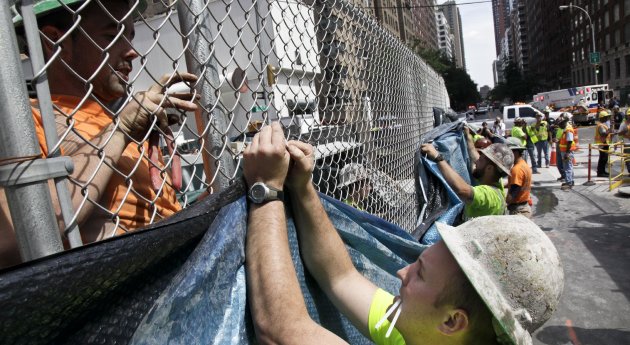
By Martin Crutsinger
U.S. builders spent more to construct homes in August, further evidence of a housing rebound. Still, the increase couldn't offset cuts in public projects and commercial real estate. Overall construction spending dipped 0.7 percent in August from July, the Commerce Department reported Monday. It was the second straight monthly decline.
The decline lowered construction spending to a seasonally adjusted annual rate of $834.4 billion. That's nearly 12 percent above a 12-year low hit in February 2011 and roughly half of what's considered healthy.
Spending on residential projects rose 0.9 percent in August. That pushed residential spending to a seasonally adjusted annual rate of $273.5 billion, nearly 18 percent above the level from a year ago.
Spending on single-family homes increased in August for the fifth straight month, while apartment construction spending rose for the 10th month in a row.
Paul Dales, senior U.S. economist for Capital Economics, said the increase in residential spending "provides more evidence that the housing recovery is gathering pace. Unfortunately, the housing sector is not large enough to set the overall economy alight."
Spending on office buildings, commercial projects such as shopping centers and hotels all fell in August. That lowered private nonresidential activity 1.7 percent to an annual rate of $288.7 billion, or 7.2 percent higher than a year ago.
Government construction activity dropped 0.8 percent in August to a seasonally adjusted annual rate of $274.9 billion. That's down 3.5 percent from a year ago. State and local activity fell 0.9 percent in August, while federal projects edged up 0.3 percent.
Though new homes represent less than 20 percent of the housing sales market, they have an outsize impact on the economy. Each home built creates an average of three jobs for a year and generates about $90,000 in tax revenue, according to the National Association of Home Builders.
Construction of single-family homes rose last month to the fastest annual rate in more than two years. Sales of newly built and previously occupied homes are up compared to last year, helped by the lowest mortgage rates on record.
While the housing market has strengthened this year, the broader economy has languished. High unemployment and weak wage growth have kept consumers from spending more freely. Manufacturing has stumbled, and businesses are investing less.
The Federal Reserve is hoping to drive mortgage rates lower to make home buying more affordable, and therefore help the economy grow. Earlier this month, it said it would spend $40 billion a month to buy mortgage-backed securities until the job market shows substantial improvement.
The broader economy is likely to benefit from a stronger housing market. When home prices rise, people typically feel wealthier and spend more. Consumer spending drives nearly 70 percent of economic activity.

No comments:
Post a Comment